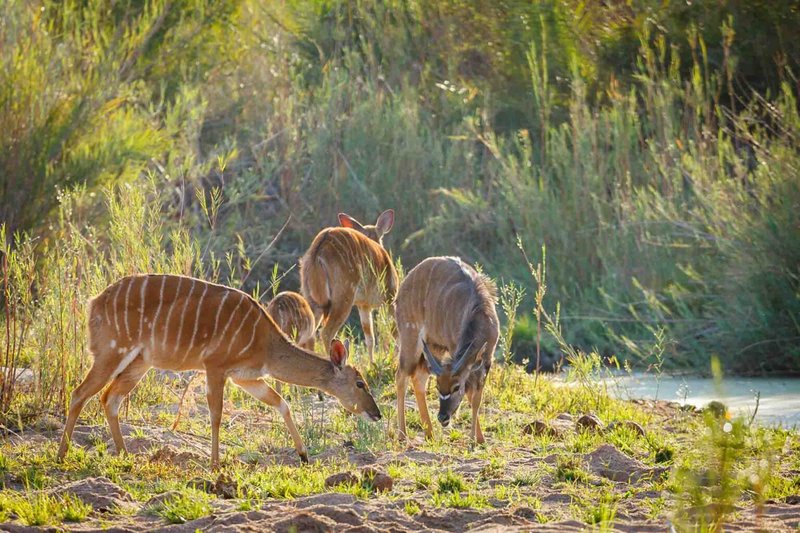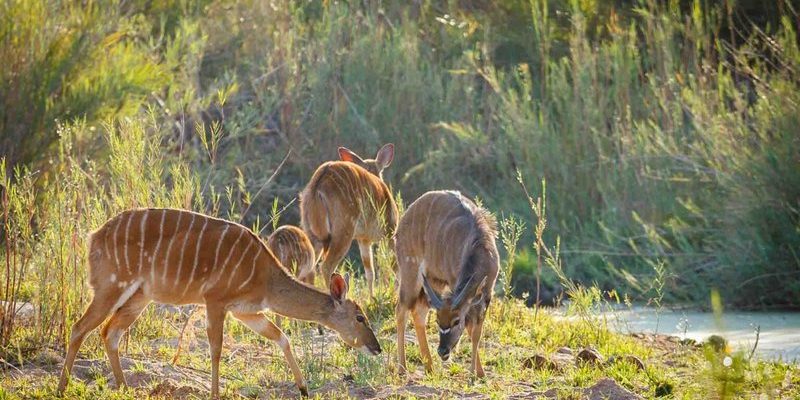
So, let’s dive deeper into the world of nyalas! Picture a lush sanctuary filled with tall grasses and scattered trees. That’s the kind of setting nyalas call home. But where exactly is this home? In this article, we’ll explore the different habitats and distribution of nyalas, so you can appreciate these magnificent animals even more. It’s like taking a road trip through the grasslands of Africa—exciting and informative!
What is a Nyala?
Before we explore their habitats, let’s take a moment to understand what a nyala is. Nyala are medium-sized antelopes, known for their distinctive coat and striking appearance. Males are typically larger than females and sport long, twisted horns that can reach up to 36 inches. Their fur ranges from reddish-brown to grayish, depending on whether it’s a male or female.
But more than just their looks, nyalas are known for their shy nature. They prefer to stay hidden among the trees and bushes, which makes spotting them a bit of a challenge. Imagine trying to find a hidden gem in a field full of shiny objects—nyalas are the gems that require a keen eye and a bit of patience to discover!
Geographic Distribution of Nyalas
Nyalas are primarily found in the southeastern regions of Africa, which includes countries like South Africa, Swaziland, and Zimbabwe. They tend to avoid densely populated areas, preferring the quieter, more remote locations. This preference for solitude is crucial for their survival, as it helps them evade predators like lions and hyenas.
Here’s the interesting part: nyalas have adapted to a range of environments within their preferred regions. They thrive in both savannas and bushy thickets. This flexibility helps them find food and shelter while staying safe from threats. It’s like having a favorite restaurant that also happens to serve takeout—versatile and convenient!
Preferred Habitat: Where Do Nyalas Feel at Home?
Nyalas are particularly fond of wooded savannas, which combine open grasslands with scattered trees and shrubs. This type of habitat provides them with plenty of coverage to hide away from predators while still giving them access to food. They love munching on leaves, fruits, and grasses—delicious treats that keep them healthy and strong.
Another important aspect of their habitat is the availability of water. Nyalas typically inhabit regions near rivers and streams. Being close to water sources is essential for their survival, especially in the hotter months. Imagine living somewhere where clean water is just a short stroll away; it makes life that much easier, right?
Behavioral Adaptations to Habitat
So, how do nyalas make the most of their environment? Their behavioral adaptations play a key role in their survival. For one, these animals are mostly crepuscular, meaning they are most active during dawn and dusk. This behavior helps them avoid the heat of the day and reduces the risk of encountering predators.
Nyalas also have an incredibly keen sense of hearing and smell. These attributes allow them to detect danger from afar, giving them more time to escape. It’s similar to how you might instinctively know when someone is approaching even before seeing them—these animals rely on their senses to navigate the unpredictable world around them.
Challenges to Nyalas’ Habitat
Unfortunately, nyalas face several threats in their native habitats. Habitat loss due to agriculture and urban development poses a significant risk. As humans encroach on their territory, nyalas lose essential food sources and shelter. It’s like trying to find a cozy spot in a crowded café—there just isn’t enough room!
Moreover, climate change is impacting their habitats as well. Changes in rainfall patterns can affect the availability of food and water. These shifts can lead to stress in nyala populations, making it harder for them to thrive. Imagine dealing with inconsistent weather on a crucial road trip—it can throw a wrench in your plans!
Conservation Efforts for Nyalas
To help protect these beautiful creatures and their habitats, various conservation efforts are underway. National parks and game reserves are critical in maintaining populations of nyalas and their natural environments. These protected areas provide safe havens for nyalas while promoting biodiversity.
Community engagement is also an essential part of conservation strategies. By educating local populations on the importance of nyalas and their habitats, organizations aim to foster positive relationships between people and wildlife. It’s like creating a beneficial partnership where everyone wins—people can thrive alongside nature.
Final Thoughts on the Nyala’s Habitat and Distribution
Understanding where nyalas live and the habitats they prefer opens a window into their world. From the wooded savannas of Southern Africa to the challenges they face, these antelopes play a crucial role in their ecosystems. Their survival is closely tied to their environment, reminding us of the delicate balance of nature.
In closing, as we ponder the magnificent nyala, let’s take a moment to appreciate the places they call home. By protecting their habitats, we not only ensure the future of the nyala but also the beauty of Southern Africa’s landscapes. After all, each of us has a part to play in protecting the world around us, just like the nyala quietly thrives in theirs.

